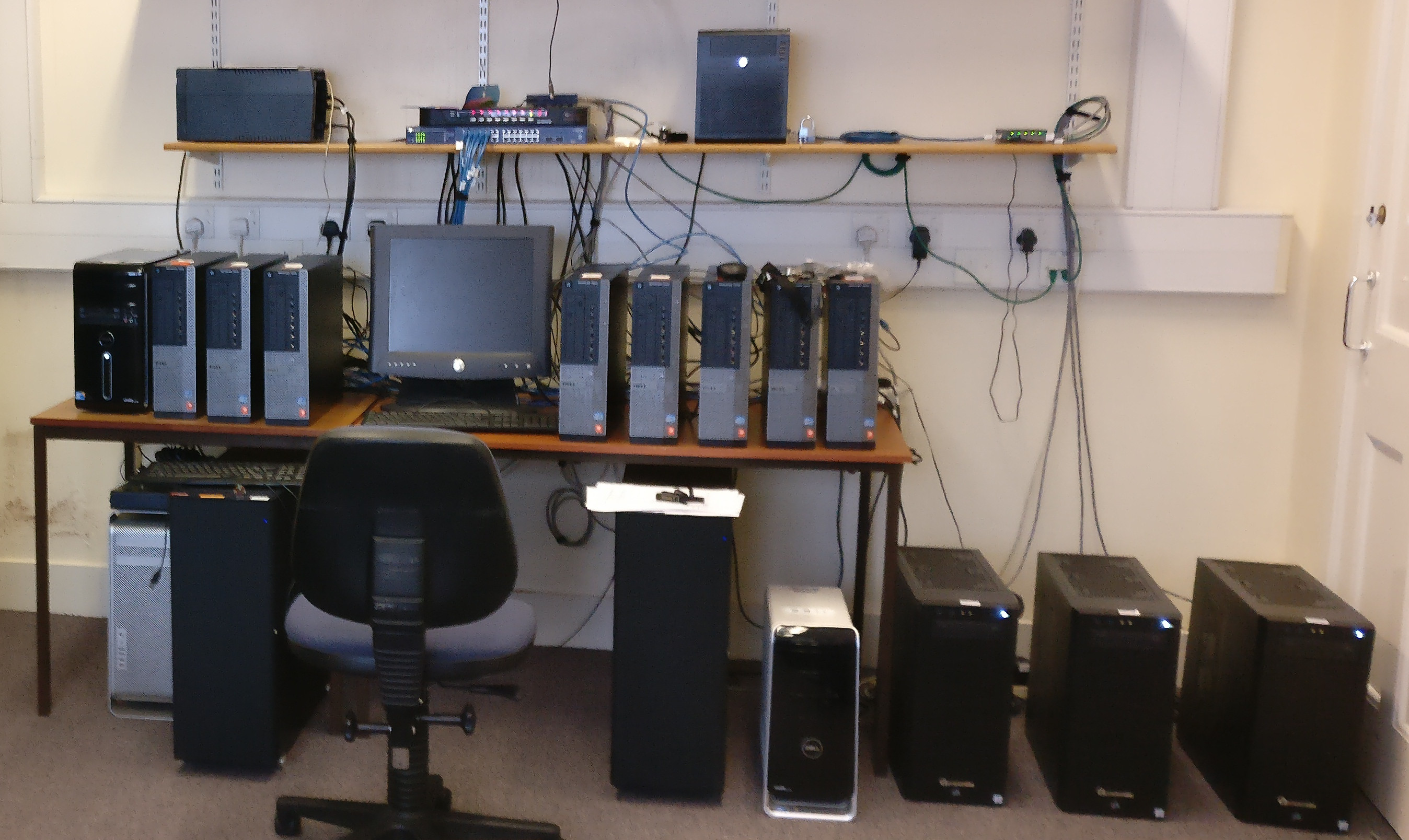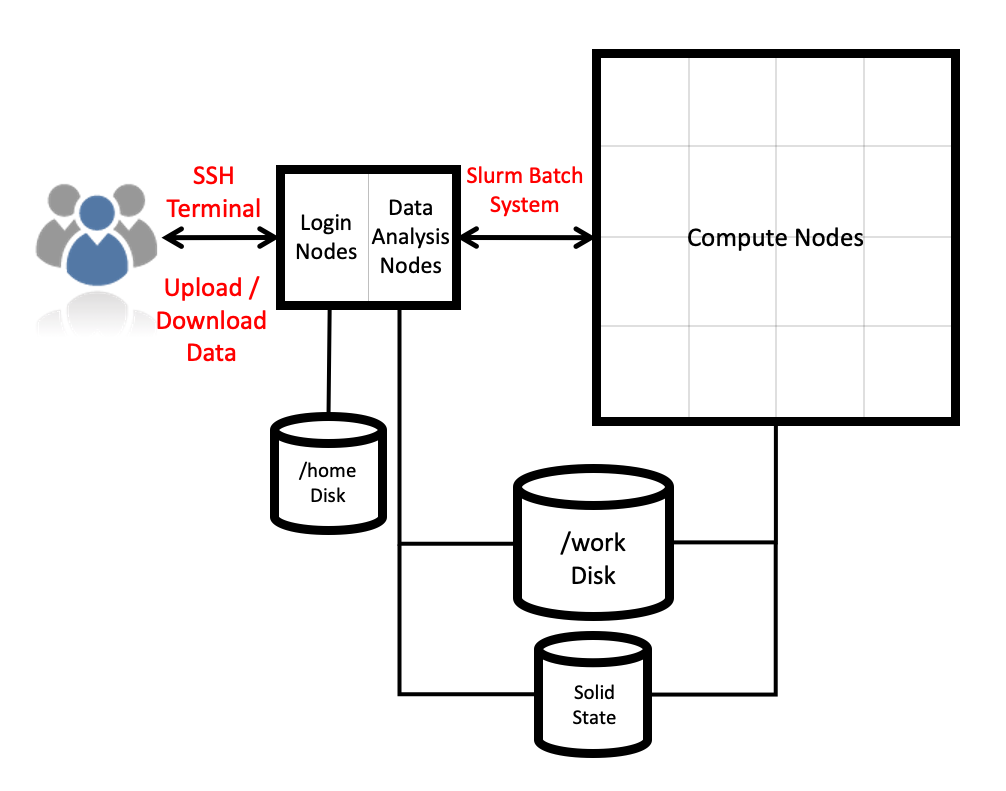LECTURE: High-Performance Computing (HPC)
Overview
Teaching: 15 min
Exercises: 5 minQuestions
What is high-performance computing?
Objectives
Learning about computer clusters and how they are made
Understanding what differentiates a HPC system from a cluster
Defining high-performance computing
The simplest way of defining high-performance computing is by saying that it is the using of high-performance computers. However, this leads to our next question.
What is high-performance computer?
On the Course Etherpad, write down what you think defines a high-performance computer.
Solution
A high-performance computer is a network of computers in a cluster that typically share a common purpose and are used to accomplish tasks that might otherwise be too big for any one computer.
Generic parallel machines and computer clusters
Consider the computer you are using to see this – it will have:
- a (probably multi-core) processor
- a hard drive
- memory
- an operating system (hopefully)
- …
While modern computers can do a lot (and a lot more than their equivalents 10-20 years ago), there are limits to what they can do and the speed at which they are able to do this. One way to overcome these limits is to pool computers together to create a cluster of computers. These pooled resources can then be used to run software that requires more total memory, or need more processors to complete in a reasonable time.
One way to do this is to take a group of computers and link them together via a network switch. Consider a case where you have five 4-core computers. By connecting them together, you could run jobs on 20 cores, which could result in your software running faster.

However, while this can increase the speed at which your codes run, or allow you to run larger systems, this is not high-performance yet…
HPC architectures
Most HPC systems follow the ideas described above of taking many computers and linking them via network switches. What distinguishes a high-performance computer from the computer clusters described above is:
- The number of computers/nodes – HPC systems have 100s to 10,000s of nodes. At present ARCHER2 has 1024 nodes, and will grow to 5,585 nodes.
- The strength of each individual computer/nodes – HPC systems are usually build state-of-the-art computers. Each ARCHER2 node has two EPYC Zen2 (Rome) 7742, 2.25 GHz, 64-core processors, for a total of 128 cores each. Further, each node had 256 GB of RAM. One downside to this criterion is that, as computing technology evolves very quickly, HPC facilities do not remain “high-performance” for long, and need to be updated or changed every 5-10 years.
- The network interconnect – this dictates the communication speed between nodes. The faster this speed is, the more a group of individual nodes will act like a unit. For ARCHER2, this inter-node communication speed is 25 GB/s!
ARCHER2 architecture
The ARCHER2 Cray Shasta system consists of a number of different node types. The ones visible to users are:
- Login nodes
- Compute nodes
- Data analysis (pre-/post- processing) nodes

Who uses HPC?
HPC is used more and more frequently by people from a growing number of fields. Traditional uses of HPC include:
- mateerials science/solid state physics
- computational chemistry
- biomolecular simulations
- particle physics
- environmental modelling
- weather and climate
- geosciences
- oceanography
- many engineering applications
HPC and me
HPC platforms try to cater to a broad range of computation needs, and have co-evolved with their user communities. HPC systems are traditionally built to achieve strong floating-point performance (number crunching), and are there to solve very large and complex scientific problems quickly (though they can also be used to run a large number of smaller, simpler systems in batches as well).
HPC platforms have evolved to fit the problem sets they are most used for, and have become more optimised towards certain problems. As HPC platforms have evolved, so has scientific software evolved to get the most out of modern HPC facilities. One example is molecular dynamics software that is nowadays heavily optimised for use on HPC systems.
Recently, some HPC facilities are specifically optimised for certain problem categories, and can help users to solve very specific problems very quickly. For example, NextGenIO is built for fast read-write speed, has large amounts of shared memory, and as a result is very useful for DNA assembly in bioinformatics.
Key Points
Computer clusters enable users to run larger, more complex jobs in a reasonable time
HPC systems are state-of-the-art clusters composed of a large number of powerful computers linked by very fast interconnects.